Sparklers to Ring In the New Year and Complement a Wide Variety of Foods + Out With The Old: Six 2012s Pommard Cuvées Unfurl with a Decade of Age
Heralding the new while paying homage to the old; that’s not only the theme song of New Year’s Eve, but for the greater wine world. Each year brings the excitement of a fresh growing season while the gems in our cellars nudge closer to maturity.
This week, we mark the new year with some of the top producers of a style most associated with celebration; sparkling wines from a variety of winemakers in Spain and France. At the same time, we are offering a carefully-curated and meticulously stored selection of Pommard—the big-shouldered Burgundy—which have now seen a decade under cork and should be approaching their zenith.
There’s no reason not to spend your year end with both; each displays its own spectrum from the color pallette we glorify collectively as wine.
Champagne, Crémant and Spanish Sparkling Wines
As always, the sparkle in our hearts at the end of the year is enkindled by our valued customers and our wonderful producers. To be the liaison between the two is an honor beyond measure, and as the local face of so many extraordinary winemakers, we’d like to close out the season with a holiday shout-out to some of the top names in Champagne, Crémant and Cava that grace our shelves and keep our spirits bright. All have excelled in the quest for terroir expression by rigorous work in the vineyards, picking fruit at its peak and employing minimal intervention in the cellar.
In Champagne, Aurélien Laherte of Champagne Laherte Frères hails from a proud heritage of innovation in Chavot, a region on the southern side of the valley formed by the stream Le Cubry; Champagne Marguet, a bellwether for innovation since 1883, continues the tradition with current winemaker Benoît Marguet, highlighting the distinction of each parcels he farms in Ambonnay; Champagne Penet-Chardonnet in the Grand Cru village of Verzy, where Alexandre Penet is known for his single-vineyard Champagnes drawn exclusively from his family’s historical lieux-dits; and in the rising star of Aube’s Côte des Bar, Champagne Fleury, where Jean-Sébastien Fleury’s Courteron vineyards span 38 acres on a clay-limestone hillside along a tributary of the Seine. And many more, 250+ Champagnes.
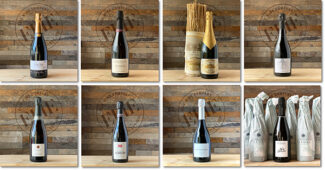
And throughout the rest of France, producing sparkling wines using Méthode Champenoise, Sophie et Gautier Guillemot-Michel and a 42-acre estate in the Quintaine, adjacent to the village of Clessé in the south of Burgundy; Domaine Overnoy-Crinquand, where Mickael Crinquand farms 13 acres in the prized hills of Pupillin in the Jura; Romaric Chavy of Domaine Chavy-Chouet, with vineyards spread across the Côte de Beaune communes of Puligny-Montrachet, Meursault, Saint-Aubin, Volnay and Pommard; and the two-hundred-year old Domaine Gouffier in the village of Fontaines in Mercurey, where Frédéric Gueugneau produces a marvelous 100% Chardonnay Crémant.
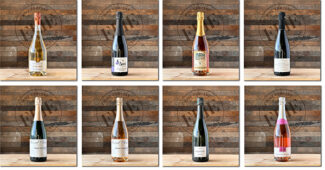
In Spain, Uva de Vida is a small, biodynamic farm in the Santa Olalla region of Toledo run by Maria Carmen López Delgado; Can Sumoi, the thousand acre collaboration between Pepe Raventós and childhood friend Francesc Escala in the Serra de l’Home range in the Penedès; also Penedès-based is Masia Can Tutusaus whose winemaker Raimon Badell never fails to impress; and from the new DO, Conca del Riu Anoia, Raventós i Blanc defends the great terroir in one of the oldest winegrowing valleys in the world.
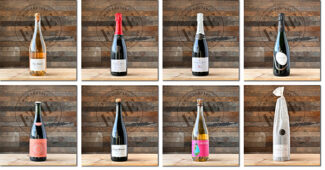
Pairing Sparkling Wine With Food
Science Proves The Match: The Fifth Taste is The Key
When the Comité Champagne asked Professor Barry Smith of the University of London to shed some light on the food pairing possibilities of Champagne, he had a field day. He’s a rare breed: An academic, a philosopher and a scientist who studies wine in an interdisciplinary fashion. To get to the root of the question, he asks one of his own: “Are the traditional matches (oysters, seafood, etc.) simply a matter of culture, or is there a biological explanation? Does it have more to do with the molecules found in flavor compounds?”
Shunning the simplistic response, he believes that the synergy between certain foods and Champagne is the result of the elusive fifth taste, umami. Smith says: “This is what has governed our favorite food pairings for centuries—ham and cheese, bacon and eggs; all these are classic examples of synergistic umami.”
Smith then refers to his colleague Ole Mouritsen, a gastro-physicist at the University of Copenhagen, fellow expert on umami and in fact the man behind some of Noma restaurant’s flavor combinations. Mouritsen is the person who discovered the umami-richness of lees-aged sake – and this is what prompted Smith to make the connection to Champagne: “Many of us will know that Champagne goes extremely well with Parmesan: these combinations of Champagne with umami-rich foods have always worked spectacularly well,” Smith notes.
Expounding further, he claims that foods high in acid and sweetness disappear relatively quickly on the palate, but umami lingers. Sipping Champagne with its own umami richness boosts the awareness of glutamate in the Champagne, and, “that is when you get the lovely richness and depth of flavor.”
“This opens lots of opportunity, because there are lots of foods out there with nucleotides and glutamates in them—think of sushi-grade tuna or even cooked tuna, scallops, and obviously, oysters. But the Champagne’s tsunami of umami works just as well over, say, brunch: Eggs Benedict served with ham, for instance. Combinations like beef carpaccio with Parmesan are matches made in heaven for Champagne, as is anything with cooked or sundried tomato, cooked seafood platters with mayonnaise, grilled radicchio and anchovy, aged cheeses and any other high umami foods.”
Out With The Old:
2012s Pommard Unfurl With a Decade of Age
Acquired taste or not, old Pinot Noir is often seen as the pinnacle of the wine-collective universe, even more than old Bordeaux. Of the most expensive wines ever sold, Burgundy represents two of the top three while Château Lafite’s incredibly rare 1869 offering does not show up until #5.
In part this is based on the wine collector’s snake devouring its own tail, but it is undeniable that—even more than Bordeaux—Burgundy is a moveable feast. Pinot Noir is a thin-skinned, delicate grape; in its youth, it rarely reflects the majesty it acquires with a few years in the bottle, and among the greatest of them, this subtle alchemy does not turn to pure gold until about a decade.
The biggest risk of older vintages, even the finest examples from the best domains, is storage. Because of its delicate structure, Burgundy is generally more susceptible to atmospheric stresses than heavier alternatives. The 2012s offered here, reaching their apex, have a well-known provenance and our guarantee is not only on solid footing, it is much easier to state than the hauntingly elusive nuances in beautifully-aged Burgundy.
Vintage 2012
As so often happens in Burgundy, 2012 snatched victory from the jaws of defeat. The combination of a cold and wet spring led to a difficult flowering, and the insult to injury was a catastrophic hailstorm on June 6. From that point, mildew became an issue, and estates that did not treat for the numerous outbreaks tended to see their yields devastated. It was not until late August that the weather finally decided to cooperate, and ripening was speedy because the crop level was so low. The harvest began in late September, and top estates took particular care in sorting to remove damaged or dehydrated bunches.
According to Domaine Parent’s Anne Parent, 2012 was tough: “We lost 55% of our crop, but others had it worse. Pommard’s climat Noizons was a complete write-off. We had to cut some bunches and leaves after the hail but the practically perfect weather in August/September provided sun, a drying wind and not too much, heat, so that grapes were brought in looking great; triage was less than 5% at harvest time.”
The hail did some wood damage to the vines, and Parent adds, “We normally prune ‘Cordon-Royat’ but have had to go back to ‘Guyot’ because of the damage to wooden parts of the vine. We will go back once the wood is replenished.”
Pommard: Pinot Noir Brut
If Burgundy is a volume of poetry, Pommard might be thought of as its Alfred, Lord Tennyson, offering power and rich structure, a Charge of the Light Brigade, only with a substantially safer outcome. Pommard is the beginning of serious Pinot Noir in Burgundy; nothing else is grown and nothing else allowed besides (perhaps inexplicably) a few vineyards of the Lemberger/ Sankt-Laurent cross ‘André.’ Aptly named for Pomona, the Roman god of fruit trees, Pommard’s most muscular wines hail from its mid-slope Premier Cru vineyards which run in a nearly uninterrupted from the commune boundaries of Beaune in the north to Volnay in the south. Even that may belie the quality of these wines; most experts believe that the Les Epenotes and Les Rugiens Premier Crus should be promoted to join Corton in its Grand Cru status. Once in line for this prestigious upgrade, the vignerons of the time were wary of the restrictive Grand Cru production laws and declined the offer.
To appreciate what happens to Pommard as it ages requires the soul of an artist; to understand why requires a little applied science. Like the description or not, wine is a complex chemical soup, and the various compounds—acids, sugars, alcohols, esters, tannins and phenolics—interact with each other from the moment the bottle is sealed. As the theory goes, grapes evolved aromatics on the vine to entice pollinating insects, and these primary aromas undergo chemical reactions with time and flavors like leather, earth, and nuts evolve, giving a properly aged wine its profundity.
In the case of Pommard, the forward and often dense tannins soften with polymerization and tertiary characters develop as the fruit fades and becomes more dried in character. Floral, earthy and undergrowth notes emerge; leather and chocolate and frequent tasting notes. Pinot Noirs from less hallowed origins may display exaggerated oak and alcohol as the fruit fades, and any flaws in the process will be exaggerated, but a well-made, well-kept Pommard from 2012 will display an optimal combination of fruit flavors, fermentation flavors and aging flavors.

For centuries Pommard has been considered the benchmark of red Burgundy; the gold standard to which others aspire. As in all things wine, this is the result of geography and geology united. The best vineyards are mid-slope, at elevations between 820 and 1100 feet; the lower ground is made of ancient alluvium. Mid-slope, the clay-limestone soils are well drained thanks to the inclusion of rock debris, and higher still are Jurassic (Oxfordian) marls, brown calcic soils, and brown limestone soils. In places, the soil is reddened by the presence of iron. Best exposures are typically south or east.
Domaine Claudie Jobard
Established in 2006 in Demigny (Saône-et-Loire), Claudie Jobard brought with her an impeccable pedigree. Her mother, Laurence Jobard, was the winemaker for Joseph Drouhin for over twenty years and is recognized as one of the best oenologists in France; her father, Roger, was a pépiniériste viticole descended from generations of experts in vine production. Her 24 acres are predominately in Rully—her Pommard property was inherited from her grandfather, and she manages the property with her sister Mireille Desmonet.
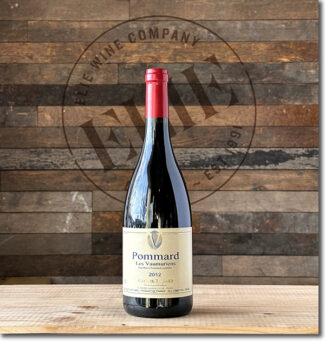 Domaine Claudie Jobard ‘Gabriel Billard’, 2012 Pommard ‘Les Vaumuriens’ ($65)
Domaine Claudie Jobard ‘Gabriel Billard’, 2012 Pommard ‘Les Vaumuriens’ ($65)
‘Les Vaumuriens’ is a 44-acre Village-level lieu-dit just northwest of the main village of Pommard. Jobard’s acre boasts sixty-year-old vines; Gabriel Billard was Claudie’s grandfather, from whom she inherited the land. The wine has evolved beautifully with layers of subtle fruit aromas finishing with a touch of earth, saddle-leather and light coffee notes.
Domaine Bernard & Thierry Glantenay
With roots in the 16th century, Domaine Bernard & Thierry Glantenay is a family story with 500 years of history. Up until around fifteen years ago, the estate sold its grapes to négociants, but that changed with Thierry taking the reins from his father, and today, the full production is sold as domain bottlings. Having trained as engineer, Thierry brings a meticulous attention to detail to his winemaking, using no more than 25% new oak for even his top wines in search of terroir expression; His lieu-dit wines are considered among the best in the region, with vines between 60 and 80 years old, values amid today’s stratospheric Burgundy price tags.
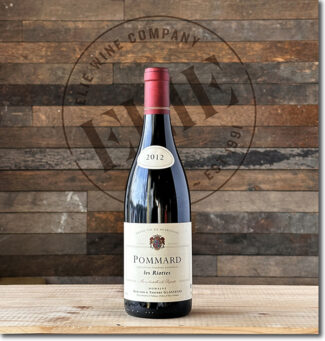 Domaine Bernard & Thierry Glantenay, 2012 Pommard ‘Les Riottes’ ($120)
Domaine Bernard & Thierry Glantenay, 2012 Pommard ‘Les Riottes’ ($120)
The name ‘Les Riottes’ stems from ‘petite rue’, or ‘little street’ in Old French. Situated besides the vines of the Château de Pommard, it is noted for the quality of its clay soils. Manually harvested with meticulous selection, the grapes underwent traditional vinification on indigenous years, then aged in 20% new oak for 14 months. The sappy acids and powdery tannins have melded into rich earth tones for a perfectly aged Pommard.
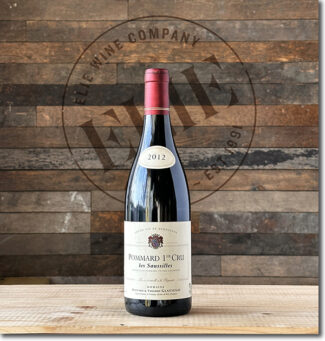 Domaine Bernard & Thierry Glantenay, 2012 Pommard Premier Cru Les Saussilles ($160)
Domaine Bernard & Thierry Glantenay, 2012 Pommard Premier Cru Les Saussilles ($160)
The ten-acre Les Saussilles lieu-dit, sometimes written as ‘Saucilles’ is a Premier Cru climat located in the northwest of the Pommard commune on the border with Beaune. It’s a hallmark of Glantenay’s portfolio, from eighty-year-old vines. The wine shows a soft salinity that is characteristic of Saussilles, along with deep brambly berry fruit and tertiary hints of truffle and chocolate.
Domaine Parent
Not much more need be said about the gravitas of this estate than the fact that Etienne Parent sold wine to Thomas Jefferson in 1787. Today, Domaine Parent is managed by two sisters, Anne Parent and Catherine Fages-Parent, representing the 12th generation of vigneron to work these rich lands. Anne Parent scoffs at the notion of bad vintages, believing that instead, there may be bad winemakers—this may, in fact, be her training as a lawyer speaking. The domain was the first in Pommard to analyze the grapes and the soil in order to pursue more environmentally-friendly winemaking and these wines are made organically, although that designation does not appear on the label.
 Domaine Parent, 2012 Pommard Premier Cru Les Argillières ($130)
Domaine Parent, 2012 Pommard Premier Cru Les Argillières ($130)
L’argile is French for ‘clay’, which should be a hint as to the terroir of this lauded climat, and as a result of the clay-rich soils, wine from Les Argillières’ ten acres are powerful and rich, with a rustic element which marks them out as definitive of the Pommard style.
 Domaine Parent, 2012 Pommard Premier Cru Les Chaponnières ($140)
Domaine Parent, 2012 Pommard Premier Cru Les Chaponnières ($140)
A wonderful seven-acre Premier Cru vineyard located just behind the Parent home in Pommard below the well-regarded Rugiens-Bas climat and above Les Croix Noires; only three growers have access. Parent only produced 350 cases. It is powerful with voluptuous scale and structure showing spicy black cherry and autumn leaves on the nose, a velvety cloak of tannins and a long, mineral finish.
Domaine Fernand & Laurent Pillot
A domain that casts a wide net, with 35 acres cultivated in 22 appellations including Chassagne-Montrachet, Pommard terroirs along with Santenay, Saint-Aubin, Puligny-Montrachet, Meursault, Volnay and Beaune. The father-and-son team of Fernand and Laurent focuses on low yields and minimal use of fertilizer. The vineyards are worked ‘agrobiologie’ with an emphasis on natural weed control; the family belongs to the research group DEPHY-EcoPhyto since 2012, which aims to decrease the amount of pesticides used and to better agricultural techniques for an environmentally sound ecosystem.
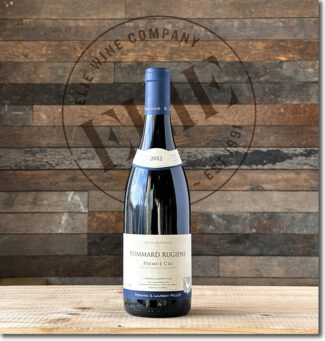 Domaine Fernand & Laurent Pillot, 2012 Pommard Premier Cru Rugiens ($120)
Domaine Fernand & Laurent Pillot, 2012 Pommard Premier Cru Rugiens ($120)
Les Rugiens consists of two parcels, Les Rugiens Haut and Les Rugiens Bas, making reference to on their positions at the summit of the Pommard slope—this wine comes from a blend of the two. ‘Rugiens’ comes from the French word rouge, referring to the reddish soil in the vineyard, a result of high iron content. The wine was allowed a few days of cold maceration prior to fermentation, then aged for 18 months in French oak barrels, 80% new. It is virile, with concentrated cherry and raspberry tones that have matured to pepper, licorice and eucalyptus.
- - -
Posted on 2022.12.31 in Pommard, Crémant du Bourgogne, France, Burgundy, Champagne, Wine-Aid Packages
Featured Wines
- Notebook: A’Boudt Town
- Saturday Sips Wines
- Saturday Sips Review Club
- The Champagne Society
- Wine-Aid Packages
Wine Regions
Grape Varieties
Aglianico, Albarino, Albarín Blanco, Albarín Tinto, Albillo, Aleatico, Arbanne, Aubun, Barbarossa, barbera, Beaune, Biancu Gentile, bourboulenc, Cabernet Franc, Cabernet Sauvignon, Caino, Caladoc, Calvi, Carcajolu-Neru, Carignan, Chablis, Chardonnay, Chasselas, Clairette, Corvina, Cot, Counoise, Erbamat, Ferrol, Fiano, Frappato, Friulano, Fromenteau, Fumin, Garnacha, Gewurztraminer, Godello, Graciano, Grenache, Grolleau, Groppello, Juan Garcia, Lambrusco, Loureira, Macabeo, Macabou, Malvasia, Malvasia Nera, Marsanne, Marselan, Marzemino, Melon de Bourgogne, Merlot, Mondeuse, Montanaccia, Montepulciano, Morescola, Morescono, Moscatell, Muscadelle, Muscat, Natural, Nero d'Avola, Parellada, Patrimonio, Petit Meslier, Petit Verdot, Pineau d'Aunis, Pinot Auxerrois, Pinot Blanc, Pinot Gris, Pinot Meunier, Pinot Noir, Poulsard, Prieto Picudo, Rondinella, Rousanne, Roussanne, Sangiovese, Sauvignon Blanc, Savignin, Semillon, Souson, Sparkling, Sumoll, Sylvaner, Syrah, Tannat, Tempranillo, Trebbiano, Trebbiano Valtenesi, Treixadura, Trousseau, Ugni Blanc, vaccarèse, Verdicchio, Vermentino, Viognier, Viura, Xarel-loWines & Events by Date
- April 2024
- March 2024
- February 2024
- January 2024
- December 2023
- November 2023
- October 2023
- September 2023
- August 2023
- July 2023
- June 2023
- May 2023
- April 2023
- March 2023
- February 2023
- January 2023
- December 2022
- November 2022
- October 2022
- September 2022
- August 2022
- July 2022
- June 2022
- May 2022
- April 2022
- March 2022
- February 2022
- January 2022
- December 2021
- November 2021
- October 2021
- September 2021
- August 2021
- July 2021
- June 2021
- May 2021
- April 2021
- March 2021
- February 2021
- January 2021
- December 2020
- November 2020
- October 2020
- September 2020
- August 2020
- July 2020
- June 2020
- May 2020
- April 2020
- March 2020
- February 2020
- January 2020
- December 2019
- November 2019
- October 2019
- September 2019
- August 2019
- July 2019
- June 2019
- May 2019
- April 2019
- March 2019
- February 2019
- January 2019
- December 2018
- November 2018
- October 2018
- September 2018
- August 2018
- July 2018
- June 2018
- May 2018
- April 2018
- March 2018
- February 2018
- January 2018
- December 2017
- November 2017
- October 2017
- September 2017
- August 2017
- July 2017
- June 2017
- May 2017
- April 2017
- March 2017
- February 2017
- January 2017
- December 2016
- November 2016
- October 2016
- September 2016
- August 2016
- July 2016
- June 2016
- May 2016
- April 2016
- March 2016
- February 2016
- January 2016
- December 2015
- November 2015
- October 2015
- September 2015
- August 2015
- July 2015
- June 2015
- May 2015
- April 2015
- March 2015
- February 2015
- January 2015
- December 2014
- November 2014
- October 2014
- September 2014
- August 2014
- July 2014
- June 2014
- April 2014
- March 2014
- February 2014
- January 2014
- December 2013
- November 2013
- October 2013
- September 2013
- August 2013
- July 2013
- June 2013
- May 2013
- April 2013
- March 2013
- February 2013
- January 2013
- December 2012
- November 2012
- October 2012
- February 2004
Search



